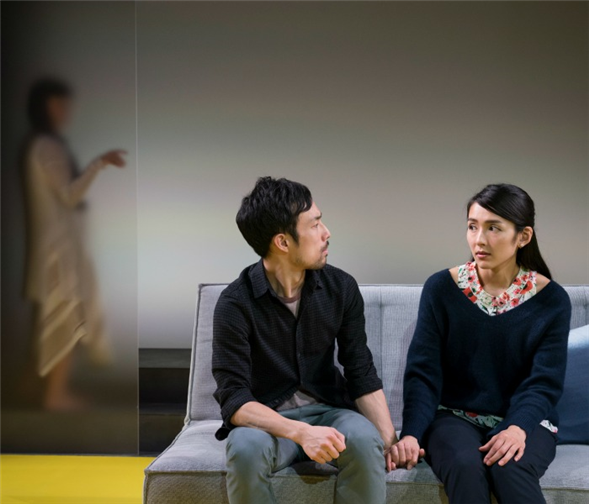Translate Page

Playwright Toshiki Okada examines the aftershocks of a disaster
---
The three characters in Time's Journey Through a Room, the latest collaboration between renowned Japanese playwright Toshiki Okada and The Play Company, make up a very unusual triangle. It would give away too much to explain exactly how they're related, but it's not a spoiler to reveal that they're all tormented by something.
The same can be said for Okada, who's haunted by one of his homeland's most tragic disasters: the 2011 earthquake and tsunami that hit Japan and sparked the Fukushima Daiichi nuclear crisis.
"It had a deep impact on me," Okada says through his interpreter, writer Aya Ogawa, who also translates his work into English. Though he didn't know anyone who perished during the tragedy, he lived relatively close to Fukushima and had to move, so the disaster weighed heavily on him.
A big part of what troubled him was what didn't happen after the catastrophe. Okada expected people's priorities and way of life to evolve in the wake of the cataclysm. "But the reality is that the world didn't change as much as I had hoped," he says. "It took me about five years to finally reach a point where I could look back and write something positive about it. I used the process of writing the play to try to better understand the place that I was in."
RELATED: Meet the Theatre: The Play Company
Stylistically, the meditative Time's Journey Through a Room marks a departure for the playwright, whose earlier works felt ripped from everyday life. Enjoy explored the plight of aspirational young workers in a climate of economic uncertainty, and The Sonic Life of a Giant Tortoise followed that generation into their thirties as they struggled to break free of convention. And while the autobiographical Zero Cost House was set post-earthquake and included Okada himself as a character, the focus was more political.
{Image1}
"There is a line in Zero Cost House when one character describes Toshiki by saying, 'He's a savant, he doesn't know what he has, and he doesn't know the kind of moves that his plays are making,'" says Time's Journey Through a Room director Dan Rothenberg, who also helmed American adaptations of Enjoy and The Sonic Life of a Giant Tortoise for the Play Company. "My experience of working closely with him is a little bit like that."
In Time's Journey Through a Room the political becomes personal, with Okada exploring his own psyche and how he responds to the ups and downs of existence. "When I think about that time after the earthquake, there is a part of me that experienced disappointment," Okada says. "But there was also a feeling of hope."
That conflicted sensibility strikes Rothenberg as quite fitting for the playwright. "Toshiki has said his influences are Brecht and Beckett, and I get that," the director says. "I think about Brecht wanting to wake up the audience, and I think about Beckett's line 'Am I sleeping while others suffer? Am I sleeping now?' in Waiting for Godot. That's what Toshiki's plays are about. They are about people who are asleep, who wake up for a moment and then they go back to sleep. I think the earthquake was a moment of awakening for a lot of people. This play is about the impossibility of holding onto that."
---
TDF MEMBERS: At press time, discount tickets were available for Time's Journey Through a Room. Go here to browse our current offers.
Follow Doug Strassler at @dougdawg13. Follow TDF at @TDFNYC.
Top image: Kensaku Shinohara and Yuki Kawahisa in Time's Journey Through a Room. Photos by Julieta Cervantes.
TDF Members: Go here to browse our latest discounts for theatre, dances, and concerts.